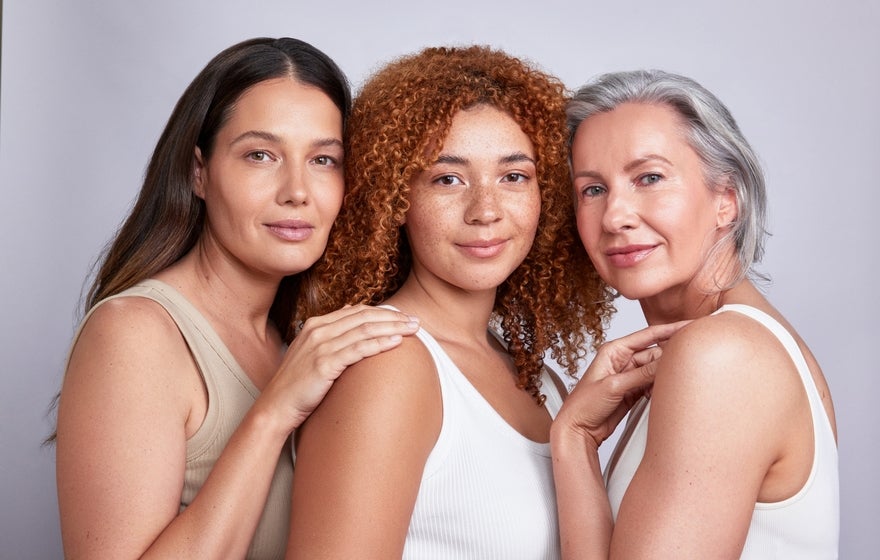
April is Skin Awareness Month, and this year’s theme is a simple-to-follow routine that can bring a big impact on the health of your skin: CTMP™: Cleanse, Treat, Moisturise, Protect.
To help guide Australians and New Zealanders on how to best care for their skin, CTMP™ was developed as a holistic skin care program created in partnership with dermatologists to support you in selecting the most appropriate cleansers, treatments, moisturisers and protection. The purpose of this comprehensive process is to help create the perfect skin canvas so that when it comes to getting aesthetic treatments, you’re setting yourself up for the best potential results.
Below we will explore some common skin conditions and what type of products you should consider according to Galderma's CTMP™ approach.
Why it’s important to consider CTMP™ before an aesthetic treatment:
When considering any aesthetic treatments, we always recommend an initial consultation with your healthcare practitioner. They can create an individualised treatment plan and a skincare routine that will help you achieve your long term skin goals through a mix of non-aesthetic and aesthetic treatments. The healthcare practitioner may recommend a pre-treatment skincare routine to clear up any skin conditions such as acne or general dryness before proceeding. The appropriate skin regime will help set you up for success and for the best results possible.
If you suffer from acne:
Acne, and adult acne in particular, is a very common skin condition affecting 85% of Australians aged between 15-24 years old. Despite being a common condition in teenage years, acne can continue to be a skin problem for many up until their mid-20s due to physical and psychological factors and medications affecting hormones.1
Hormonal changes resulting in an increase in sebum (oil) production is a root cause of acne; however, acne can come from many different causes. Non-inflamed acne consists of blackheads and whiteheads whereby oil glands become blocked, which can lead to inflamed acne if left untreated. Inflamed acne, on the other hand, consists of cysts, nodules, papules and pustules. Due to the risk of permanent scarring, early treatment of inflamed acne is recommended. Forms of treatment will vary depending on the type and severity of acne. It is recommended that a healthcare professional be consulted. For mild acne, a simple skin routine may help prevent acne flare ups.1
CLEANSE: Opt for a salicylic-based cleanser due to its acne-treating properties that come from its ability to deeply cleanse and exfoliate your pores.2
TREAT: Products containing benzoyl peroxide, such as Benzac AC 2.5%, are great for managing acne-prone skin due to its ability to kill bacteria under the skin.3 ALWAYS READ THE LABEL AND FOLLOW THE DIRECTIONS FOR USE.
MOISTURISE: When it comes to moisturising, it’s best to stick with one without added fragrance or alcohol to keep irritation at bay.
PROTECT: Sunscreen is a ‘must’ regardless of your skin condition, so opt for one that won’t further clog your pores, such as a light-weight SPF 50+ product to ensure you’re still protected from the sun.
If you experience dry skin:
Affecting many Australians within a range of ages, dry skin is due to water loss from the outermost layer (the stratum corneum), causing dehydration.
While each person may experience different symptoms, some of the most common symptoms include a dull appearance, small lines and cracks in the skin, a rough and dry feeling to the touch and scaliness. Affecting any part of the body, dry skin on the face can feel particularly irritating due to the way it affects products and make-up sitting on the skin.4
CLEANSE: To ensure your natural skin barrier isn’t stripped down, look for a cleanser suited for dry skin with hydrating properties included.
TREAT: Sometimes very dry skin may be due to an underlying skin condition. It is best to consult a healthcare professional if the condition is severe. In these cases, the appropriate treatment will be specific to the cause.
MOISTURISE: It’s no surprise that a deeply nourishing and hydrating moisturiser is key to helping alleviate the symptoms of dry skin.4
PROTECT: Luckily, sunscreens come in all forms and finishes. Look for one with nourishing properties to assist with hydrating while protecting from the harsh sun.
In chatting to your healthcare provider, they can advise you of all your options and how the CTMP™ method can be applied to assist you in achieving your long-term skin goals.
References:
- Acne. Skin Health Institute. Accessed March 9, 2023.
- Can Salicylic Acid Help Treat Acne?. Accessed March 13, 2023.
- How to Treat Acne with Benzoyl Peroxide. Accessed March 21, 2023
- A Dermatologist’s Tips For Rosacea-Prone Skin. ELLE Australia. Accessed March 9, 2023.
AU-NBD-2300016. TAPS NP19259.
